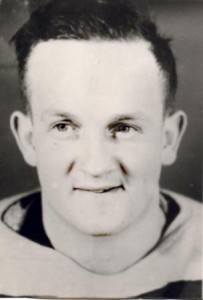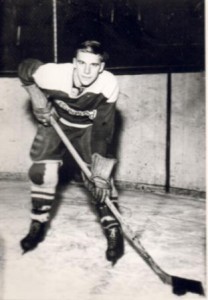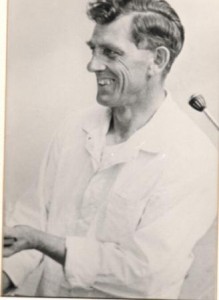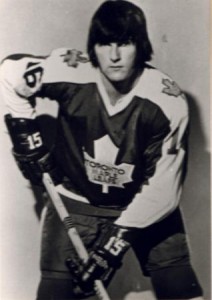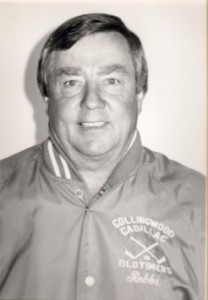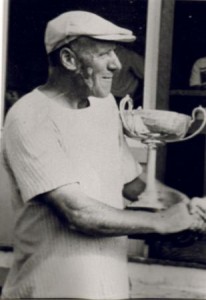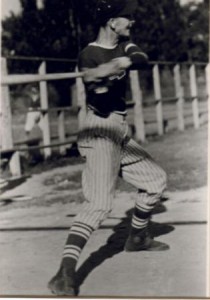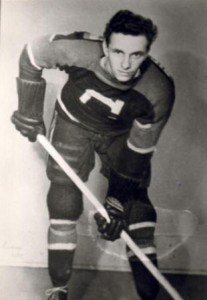 If there ever was a Lady Byng Trophy for amateur hockey players, Ab Kirby would have won it ten years in a row.
If there ever was a Lady Byng Trophy for amateur hockey players, Ab Kirby would have won it ten years in a row.
Through a career of twenty years in O.H.A. competition, Kirby’s penalty record could be written on the head of a pin. Here was a player who exploded the Leo Durocher theory that “Nice guys finish last”.
Collingwood born Albert Kirby played on championship teams in the junior, intermediate and senior O.H.A. series with Barrie, Collingwood and Owen Sound
and he was always up there with the scoring leaders.
One of the high points in his great career came in 1939 when the helped the
Collingwood Shipbuilders win the O.H.A. Intermediate “A” title. In sixteen games he scored sixteen goals and assisted on sixteen others. He went through the entire series without drawing a single penalty.
This shifty little centre man never weighed any more than 135 pounds (soaking wet)
but he held his own with the hard bumping giants of that era. One of the best
stick handlers of his time. Ab never had to resort to rough play. He was a
gentleman on and off the ice. Like his long-time team mate, Eddie Bush, Ab learned his hockey basics on the East End mill ponds.
He made the Collingwood junior club at age fifteen in 1934 and the following
season went to the Barrie Colts. Barrie won the O.H.A. Junior “B” title and Kirby scored 30 goals in the regular season. He picked up seven goals in the five-game final series against St. Michael’s College.
He was back in Collingwood in 1938 but had to sit out most of the season after
MIDLAND PROTESTED HIS ELIGIBILITY UNDER THE RESIDENCE RULE.
Re-instated in ,1939, he played for the Collingwood Shipbuilders under the coaching of former N.H.L. star, Bern Brophy, and the Shipbuilders won the championship. Kirby played on a line with Alvie Wilson and Greg Coulson.
Ab scored six goals and had three assists in the five-game final against the Port
Colborne Incos. In 1940 he moved up to senior company with St. Catherine’s with
Collingwood team mates Don Jeffery and Dick Tracey. That team went to the
O.H.A. Senior “A” final against the Toronto Goodyears.
Kirby added a senior championship medal to his collection when he helped the Owen
Sound Trappers win the Ontario Senior title in 1947.
But he came back to his home town in 1951 when Jack Portland came back from a
ten-year N.H.L. career, coached the Shipbuilders and took them to the O.H.A.
Intermediate “A” semi-final round.
He finished his career with Eddie Bush and the Shipbuilders in 1952 and 1953 when
the Collingwood club won back to back provincial Intermediate “A” championships.
Ab did not confine his athletic endeavours to hockey. He was a better than average
baseball and softball player and had a hand in coaching midget hockey and baseball teams. He was Brit Burns’ assistant coach when the Collingwood Juveniles won the O.M.H.A. championship in 1956.
Along-time director in the Collingwood Minor Hockey Association, he served two years as president.

